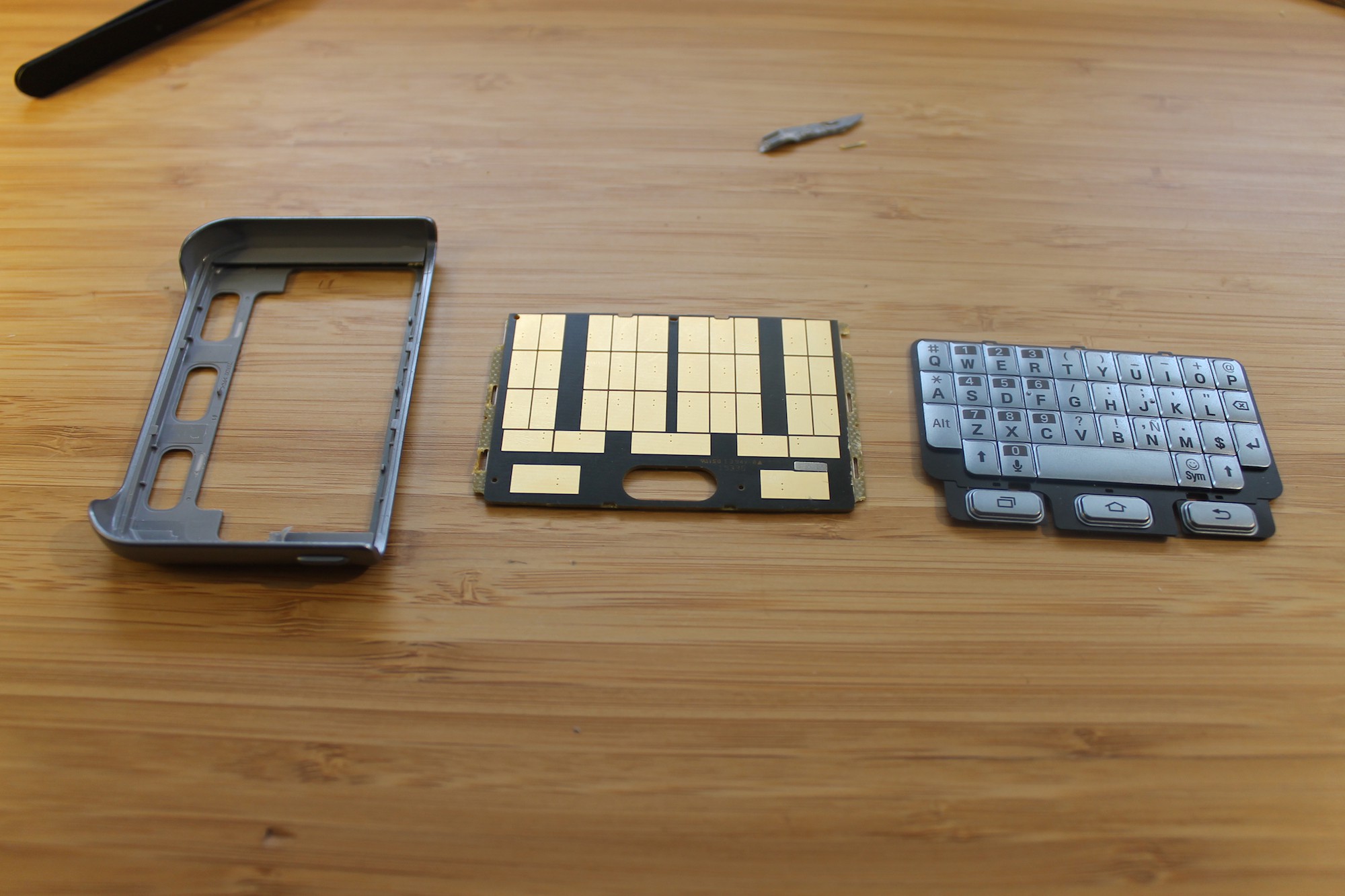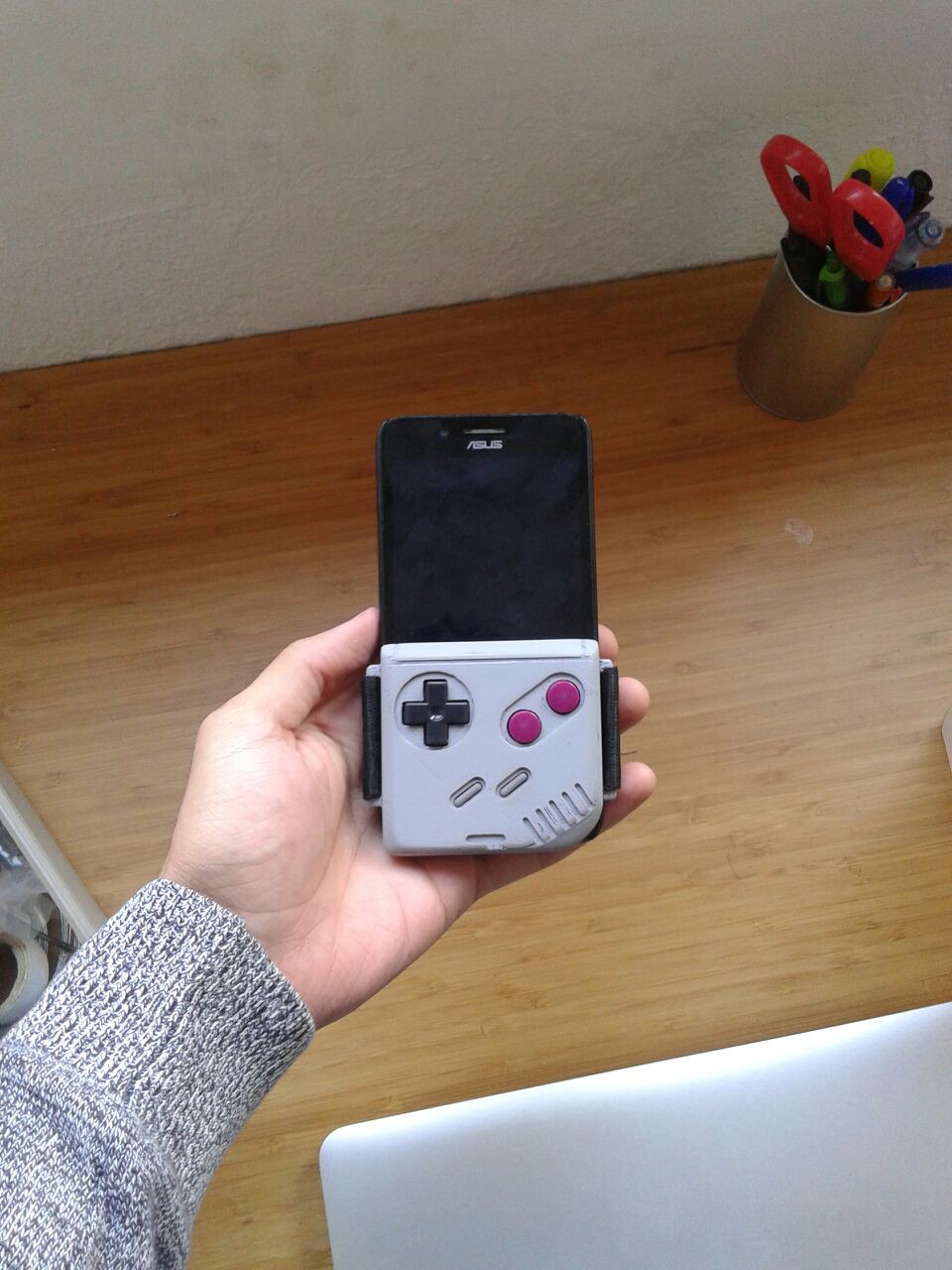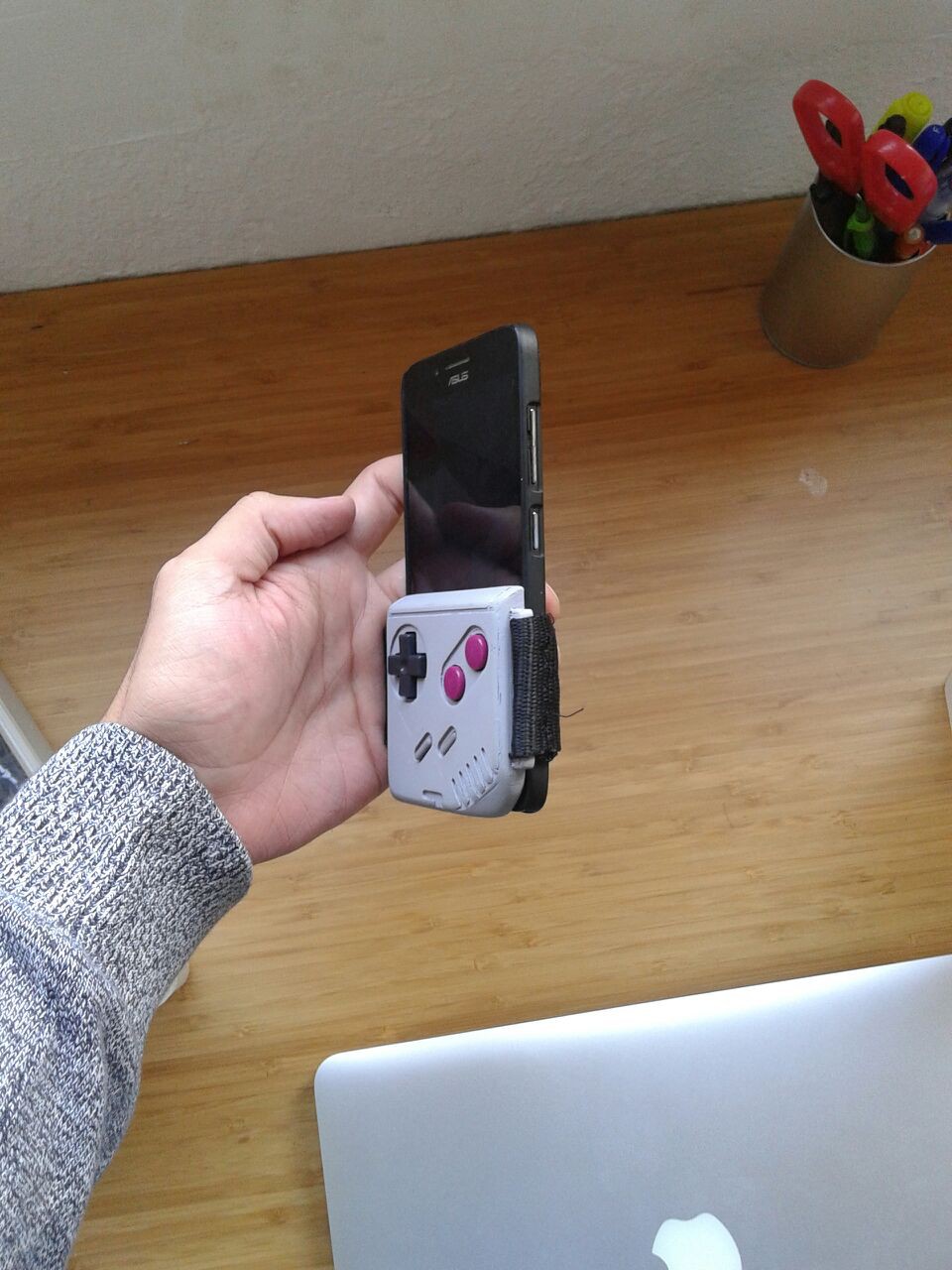I try to go for capacitive sensing
When first thinking about the design and technology I was going to use I always had in mind the design principles I had chosen. Those were going to be my mantra.
I saw an interesting option that catch my attention. It was a device that purse to turn your phone into a Gameboy, it was called SmartBoy and was developed by Hyperkin, a company that developed devices to play retro-games. I loved the concept although I did not like the design that much. It was a little bit bulky and, from reviews I read, use wasn't pretty straight forward. I decided to go for a classic Gameboy design then since it made por sense for portable game emulation and was an easier approach.
After some more research I got this idea of using something that, in contact with the screen, could activate the touchpads.
Just to clarify, nowadays most smartphone screens are capacitive. This kind of screen detects how electric fields varies in presence of different objects and, it's optimized by an internal firmware to detect human skin (which is the element i has to interact with)
This design was very smart and efficient because, if the right material was chosen, there was no need of electronics. I started doing more research about it and got this two different ways to approach design:
- Using some kind of conductive rubber that, in contact with my fingers and the screen at the same time, the phone could detect a touch. Imagine something like a rubber cup you can find on most gamepads/remotes etc but instead of closing a circuit it would put your finger in contact with the screen. This method was smart but difficult to achieve, at least for my resources. I looked for DIY solutions to build my own rubber: silicon + graphite powder/carbon fiber chop sticks/salt. No of them ended up working pretty well and this method was not very scalable. Another way was to go bigger, find a supplier that would manufacture conductive rubber, invest money and scale. But as said, I didn't had the resources and didn't want to risk that much at the very beginning.
- The other option I had was quite slick. While I was exploring for more options I stumbled upon a product samsung had developed. It was a physical keyboard that attached to your smartphone. It was light and small and had no battery. I started researching about its functioning, even bought one to disassemble it and do kind of "reverse engineering":

I found a patent for this keyboard and I could confirm the conclusions I got when doing my functioning analysis. The principle was simple. It was like kind of a double sided PCB, on the upper side it had switches which connected a mass of copper to the pad in the other side through a via. This pad was always in contact with a certain part of the screen and, when the switch was closed, the screen detect the copper mass and registered an input.
But everything is not that magical... I made several versions of it, tried to work with different phones, changed designs and never got consistent results. I spent about a month pursuing this technique. Changing copper size areas, patterns did not work. Using different materials for the switches, changing board thickness..nothing. I tried to build the boards by myself at first and ordering them to a professional manufacturer after.
I finally got a version that more or less seemed to work. But, as said, it did not work consistently. Apart from that, I was not really convinced with the mechanical side. The bottom part of the device has to be in contact with the screen al the time. It couldn't move or you could end up registering wrong signals. This was hard to achieve if it was meant to be used in different kind of smartphones. I finally got a design which consisted in a back clip which was adjustable to different sizes. That version was held on the smartphone with nylon strips. Here are two pics of that design, looked cool though uh?


My last attempt consisted in trying to tweak android software to get more sensible to this copper "touches". I concluded that it seemed to be a chip that couldn't be accessed, unless you had a rooted phone, which registered the touches in order to send them to the SO. Modifying that chip's internal firmware seemed non scalable. I finally had to be realistic, Samsung was a huge manufacturer with decades of knowledge, tons of resources, engineers and they may had modified that firmware for de Galaxy phones.
I only had an option left, going for an electronic solution, but that is a story for the next log!
 Victor Dedios
Victor Dedios
Discussions
Become a Hackaday.io Member
Create an account to leave a comment. Already have an account? Log In.